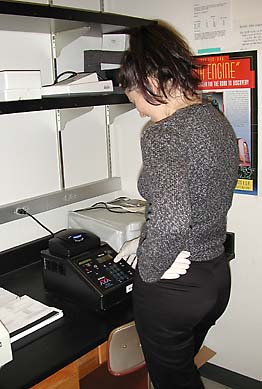Welcome to UCMP’s Molecular Labsby Sharon Moshel-Lynch — (page 1 of 3) |
||
|
To obtain a more complete understanding of the evolution of life, we must study more than just fossils. Increasingly we are finding answers about evolutionary relationships through the study of comparative molecular evidence. While advances in DNA sequencing have enabled researchers to perform molecular research rather easily, the sheer magnitude of the job before us is still quite daunting. As part of its commitment to advancing the study of the past, UCMP has established state-of-the-art molecular facilities to provide our researchers with the means to carry out molecular research. Housed within the museum are several molecular laboratories suited for a variety of specialties within the discipline commonly known as Molecular Biology. These laboratories are open to students, staff, and faculty of the museum, as well as visiting scholars.
The DNA Extraction Lab |
 Grad student Emina Begovic programs a thermocycler to run a PCR (Polymerase Chain Reaction), in order to produce amplified (numerous copies of) DNA. (photo by David Smith)
|
|